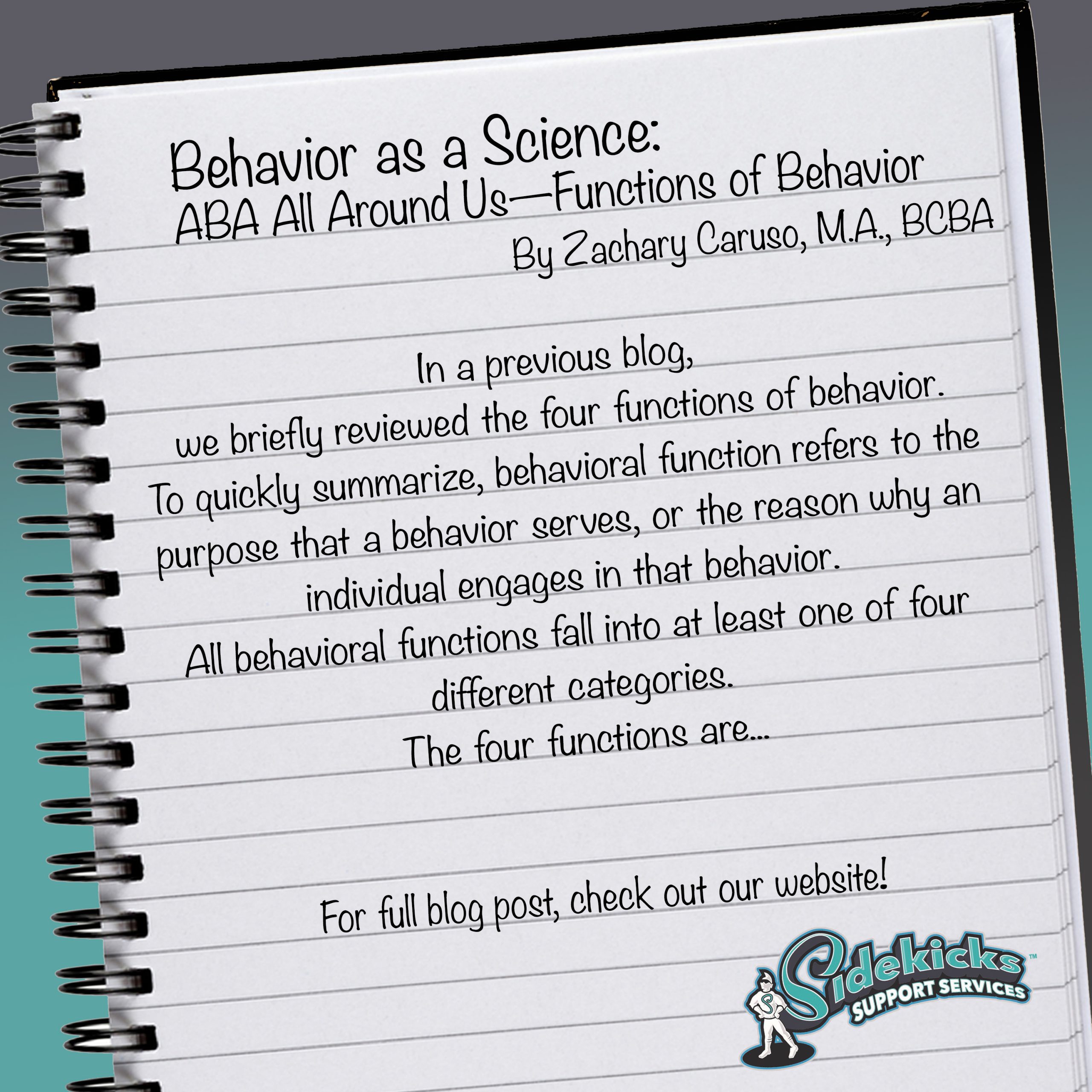Today, we will discuss the functions of behavior. In a previous blog, we briefly reviewed the four functions of behavior. To quickly summarize, behavioral function refers to the purpose that a behavior serves, or the reason why an individual engages in that behavior. All behavioral functions fall into at least one of four different categories.
The four functions are: attention-seeking, access to tangibles or activities, escape or avoidance of tasks or demands, and automatic reinforcement. Now let’s apply these functions to real-world scenarios.
Example 1, (Attention-Seeking): You’re scrolling through Facebook when you come across a funny meme. You engage in the behavior of sharing that meme, which is then followed by people reacting to and commenting on your post. The reactions and comments from your friends are providing your behavior of sharing the meme with reinforcement in the form of social attention.
Example 2, (Access to Tangibles): You get home after a long day of work and you decide to relax on the couch and watch TV. You engage in the behavior of picking up the remote control and pressing the power button, which is followed by the television turning on. Your behavior of picking up the remote and pressing the power button is being reinforced by gaining access to the activity of watching TV.
Example 3, (Escape): You work for a Scranton-area paper supply company and are attending an awkward dinner party with your boss and colleagues. You pretend to get a text message from your landlord saying that your apartment flooded and you have to leave. Your behavior of making up an excuse is being reinforced by escaping the aversive situation of the uncomfortable work party.
Example 4, (Automatic Reinforcement): You’re walking through an elaborate garden with beautiful flowers. You come across some roses and you decide to smell their pleasant scent. Your behavior of smelling the roses and experiencing the aroma is in itself reinforcing.


0 Comments